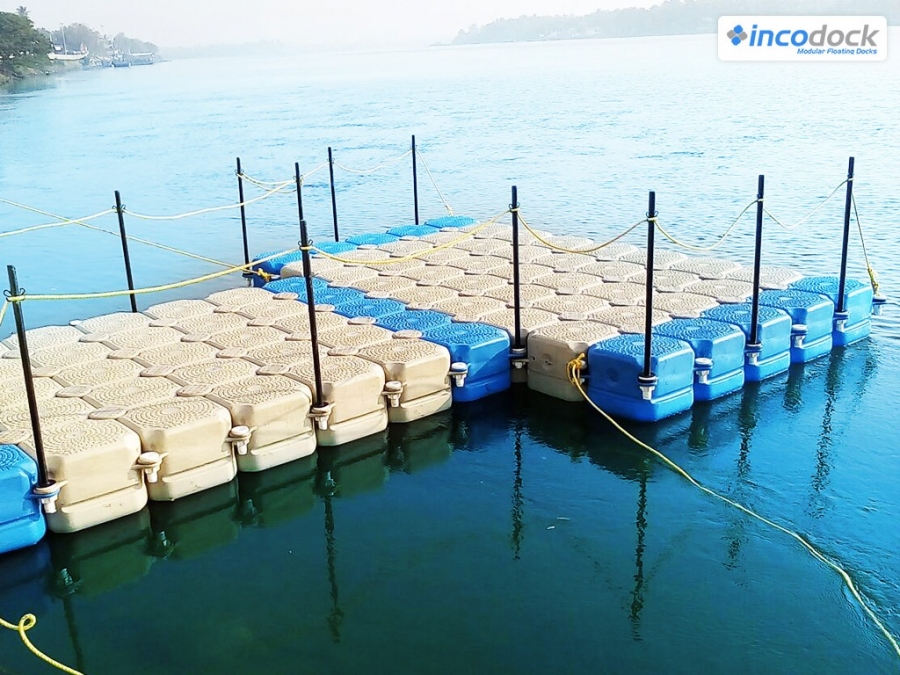Optimizing Your Outdoor Room with Specialized Floating Dock Services
Optimizing Your Outdoor Room with Specialized Floating Dock Services
Blog Article
Upgrade Your Waterside With Sturdy Floating Docks
Updating your waterside with long lasting floating docks can considerably improve both performance and appearances, offering a versatile service for different water activities. With an array of materials available, consisting of low-maintenance choices and standard timber, choosing the best dock can enhance your individual design and meet functional requirements.
Benefits of Floating Docks
Floating docks offer a wide range of advantages that improve their allure for numerous maritime applications. One of the main advantages is their flexibility to transforming water levels - floating docks. Unlike conventional set docks, floating docks fluctuate with the trend, making sure constant accessibility for watercrafts and boat regardless of ecological problems. This attribute considerably minimizes the danger of damages to vessels, as they stay securely anchored even throughout changes in water deepness.
In addition, floating docks are easier to move and mount, giving versatility for temporary or seasonal use. Their modular layout permits customization to fit particular requirements, whether for private marinas, residential beachfronts, or industrial applications.
Furthermore, floating docks develop marginal disturbance to the aquatic setting, preserving regional environments and lowering the chance of disintegration. They also supply improved security and stability for customers, as their buoyant nature uses an extra flexible surface area than inflexible frameworks.
Furthermore, floating docks can facilitate a diverse variety of activities, such as fishing, swimming, and recreational boating, making them a beneficial property for waterside development. Their adaptability and practicality make floating docks a recommended option for a range of marine projects.
Selecting the Right Products
Picking ideal materials for floating docks is crucial to their long life, efficiency, and total efficiency. When selecting products, think about elements such as environmental direct exposure, maintenance demands, and structural honesty. Typical materials consist of timber, plastic, aluminum, and composite alternatives, each offering distinct benefits and disadvantages.
Wood, while visually pleasing, needs normal upkeep to stop rot and decay. Pressure-treated timber can boost toughness, however it might still succumb to water damage in time. Plastic floats, commonly made from high-density polyethylene, are resistant to deterioration and need marginal upkeep, making them an attractive selection for low-maintenance applications.
Aluminum is an additional feasible option, understood for its strength and lightweight homes. It is immune to corrosion and can stand up to rough weather condition conditions, although it might be much more expensive than other materials. Composite materials incorporate the finest characteristics of wood and plastic, offering a low-maintenance and resilient option that resembles the look of wood without the connected downsides.
Ultimately, the option of material should straighten with the meant usage, ecological considerations, and spending plan restrictions, making sure a resilient and practical floating dock that meets your specific requirements.
Installation Process Summary
The successful installation of a drifting dock relies upon cautious preparation and implementation, making certain that it runs properly in its intended atmosphere. The initial step involves examining website conditions, consisting of water depth, shoreline features, and prevailing climate patterns, which will inform the dock style and anchoring system.
Following the site evaluation, the following stage is to prepare the floating dock elements. This consists of assembling the framework, safeguarding floats, and affixing any required equipment. It is essential to ensure that all connections are durable and water-resistant to hold up against aquatic problems.
Once the dock is set up, the installment process begins with positioning the dock in the water. This can include a crane or other lifting tools, specifically for bigger frameworks. Proper placement is necessary for functionality and security.

Upkeep Tips for Long Life
Normal maintenance is crucial for making sure the long life and ideal performance of a drifting dock. To attain this, begin with routine assessments a minimum of two times a year, focusing on the stability of the dock's structure, consisting of the flotation tools read more and linking equipment. Seek signs of damage, wear, or deterioration, and attend to any type of problems promptly to avoid additional deterioration.
Cleansing is one more critical aspect of upkeep. Remove particles, algae, and barnacles from the dock's surface to avoid slippery problems and preserve visual charm. Use a light cleaning agent and a soft brush to stay clear of harming the dock's products.
Furthermore, find out here now make certain that the dock is appropriately secured and safeguarded to hold up against seasonal modifications in water degrees and weather problems. Inspect the anchoring system for security and make changes as required.
Enhancing Your Outdoor Visual
To develop a visually attractive outside room, integrating a drifting dock can substantially boost the general aesthetic of your beachfront property. Floating docks are not only practical but can likewise function as a striking prime focus that enhances the all-natural surroundings - dock company. Readily available in different materials and styles, these docks can be customized to match your building's architectural style and landscape
The addition of attractive elements, such as integrated lighting or trendy barriers, even more elevates the dock's aesthetic appeal. Think about using natural timber coatings, which mix flawlessly with the environment, or going with contemporary products like light visit this web-site weight aluminum or composite outdoor decking that supply a streamlined, modern appearance.
Purposefully putting planters or seating areas on or around the dock can develop inviting rooms that encourage relaxation and enjoyment of waterfront views. Additionally, incorporating shades and structures that balance with your landscape will develop a natural visual throughout your exterior location.

Conclusion

Upgrading your beachfront with durable floating docks can considerably enhance both capability and visual appeals, supplying a flexible option for numerous water tasks. Unlike conventional set docks, floating docks increase and fall with the tide, ensuring constant availability for watercrafts and watercraft regardless of ecological problems.Choosing proper materials for floating docks is vital to their durability, efficiency, and total efficiency.When the dock is constructed, the installment procedure starts with positioning the dock in the water.In summary, floating docks deal various advantages, consisting of versatility to water level adjustments and a range of material alternatives.
Report this page